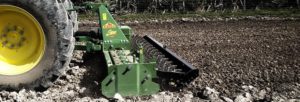Spring is almost here, and if you’re a farmer, that means things are about to ramp up. As the weather starts warming up, you’ll be spending a lot of time out in the field on your mower. For cattle farmers in particular, managing your pastures and preparing them for grazing is going to take up a lot of your time and energy. Achieving the perfect balance between daily pasture allocation and intake from the start will put you in good stead for the remainder of the season, but getting it right takes skill, experience, and lots of planning. It also doesn’t hurt to have a few tips from those in the know. For this blog, we share some of our favourite, tried-and-true pasture management techniques.
PREPARING YOUR PASTURES FOR GRAZING
The first stage of pasture preparation is all about setting the right conditions for the rest of the season a. You can begin the first grazing round 6-8 weeks after you have sowed a perennial rye grass and allow the cattle to graze the first 3-4 cm off the top of the plants. As we all know, cattle are hard on grass, so we recommend conducting the first graze with younger stock. If this isn’t possible, you can use fully grown cows, but you should limit their time in the paddock to around one or two hours to prevent excessive grazing.
Before you introduce any cattle, you should conduct a ‘pluck test’ of the grass to ensure the plants are firmly rooted and won’t be pulled straight out during grazing. You will also want to watch your pastures closely for weeds and eliminate them before they have a chance to take hold. However, it’s important to keep in mind this is not a ‘one size fits all’ operation; make sure you are using the right herbicide for the specific weed you are dealing with.
USE THE RIGHT FERTILISER
Like herbicides, there is no single right answer to the question of what fertiliser will work best for you. Conducting a soil test can tell you quickly and accurately what nutrients your soil is lacking, and as the new grass grows, you’ll be able to glean plenty of other useful information to help you get the balance right. In most cases, soil will benefit from a pellet nitrogen fertiliser in late winter or early spring.
USE A ROTATION PLANNER TO ALLOCATE GRAZING PASTURE
In order to provide for the growing needs of the milking herd over spring, you will need an accurate and efficient plan to rotate the grazing pastures. Doing this will allow you to minimise deficits and maintain good pasture quality for the duration of the season. Once you have this system in place, it will make your job that much easier and free you up to focus on the myriad other tasks required to maintain your farm and your stock. We recommend using this great Spring Rotation Planner from Dairy NZ. By putting in some basic details, it will help you design a customised plan for the critical early-spring period.
CONTACT FARMGARD TODAY
At Farmgard, our customers have come to associate us with our core values of honesty, innovation, customer focus, and expertise. These, and the belief that farming products should be built to last, are at the heart of everything we do. To speak to one of our team today about our fantastic range of products and services, you can contact us by phone or online. For more information about rotary hoes for sale, power harrow and farm machinery sales click here.



